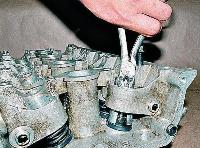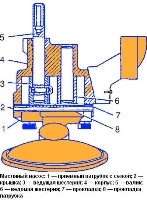A car with a ZMZ-406 and ZMZ-405 engine is equipped with a generator 9422.3701 or 2502.3771
The generator is a three-phase synchronous electric machine with electromagnetic excitation and a built-in silicon diode rectifier.
The generator rotor is driven from the engine crankshaft pulley by a V-ribbed belt.
The stator and generator covers are held together with four screws.
The rotor shaft rotates in bearings mounted in the covers. Bearings are lubricated for their entire service life.
The rear bearing is pressed onto the rotor shaft.

The front bearing is installed on the inside of the front cover.
The back of the generator is covered with a plastic casing.
In the stator of the generator there are two three-phase windings made according to the "star" scheme and connected in parallel to each other.
The rectifier is a bridge circuit, it consists of six power limiting diodes or ordinary ones (on part of the generators).
They are pressed into two horseshoe-shaped aluminum holder plates.
On one of the plates there are also three additional diodes through which the excitation winding of the generator is powered after the engine is started.
The excitation winding of the generator is located on the rotor.
The winding leads are soldered to two copper slip rings on the rotor shaft.
They are powered by two carbon brushes.
The brush holder is structurally integrated with the voltage regulator.
The voltage regulator is non-separable, in case of failure it is replaced.
To protect the car's electronic equipment from voltage pulses in the ignition system, as well as to reduce radio interference, a capacitor is installed between the "+" terminal and the "ground" of the generator.
The generator windings and the rectifier unit are cooled by the fan impeller through the windows in the covers.
Technical characteristics of the generator 9422.3701
Nominal voltage 14 V
Maximum current 72 A
Voltage adjustable 13.5-14.2V
Excitation winding resistance 2.3–2.7 Ohm
Removing and repairing the generator
Disconnect the battery.
Remove the engine mudguard.
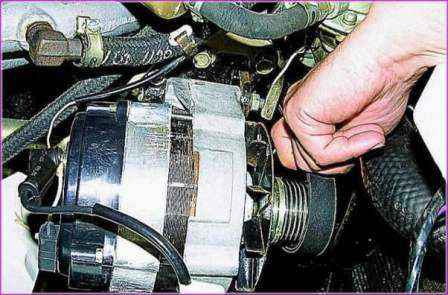
Weaken the belt tension and remove the belt from the generator pulley.
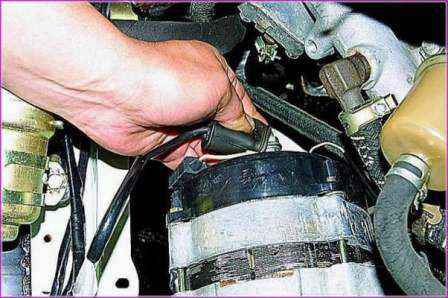
Remove the wire tip from the "+" terminal of the generator.

Use the “10” key to unscrew the wire fastening nut
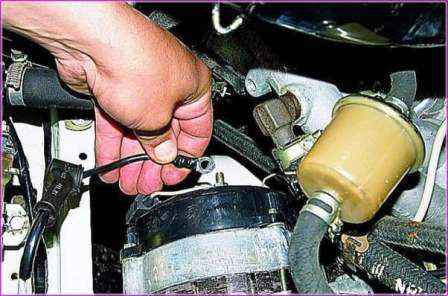
Remove the wire tip from the "+" terminal of the generator.

Remove the plug from the generator plug
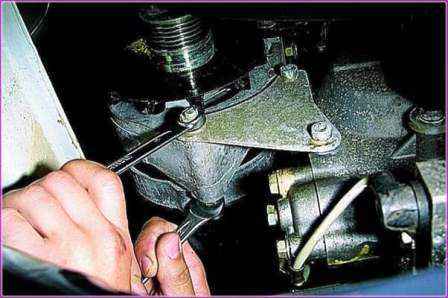
Using the “13” key, unscrew the nut, while holding the “12” key, the bolt securing the generator to the bottom bracket
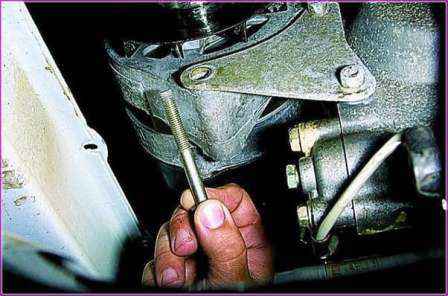
Remove the bolt.

Using the “13” wrench, unscrew the nut, while holding the “12” wrench, the bolt securing the generator to the upper bracket
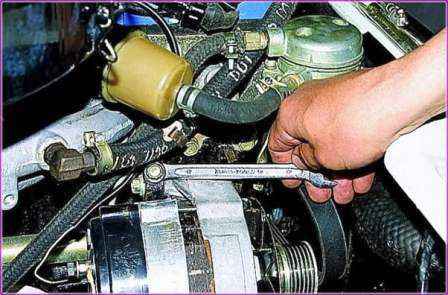
Use the “12” key to loosen the bracket bolt.
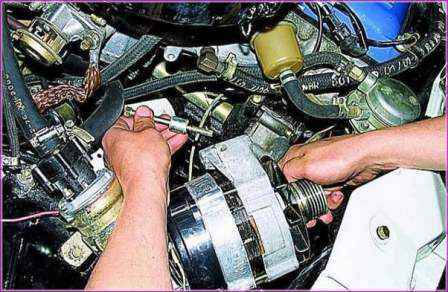
Remove the bolt with the bushing and remove the generator from the engine.

Use the “10” key to unscrew the wire fastening nut
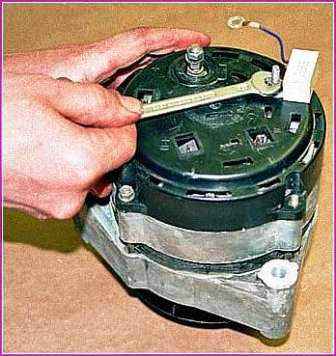
Use the “8” key to unscrew the nut securing the capacitor and remove it
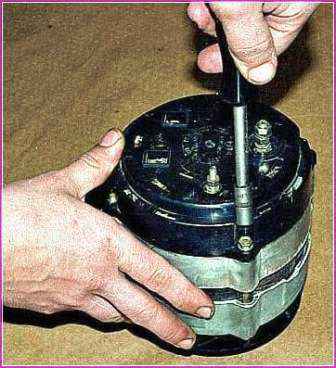
Head "8" unscrew the two nuts
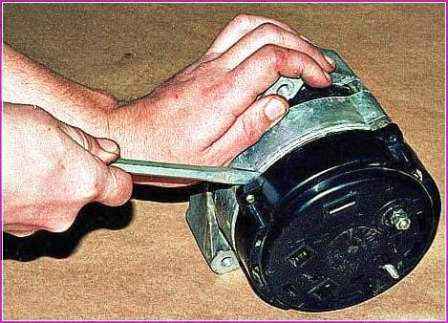
Prying off with a screwdriver, remove the plastic casing of the generator.
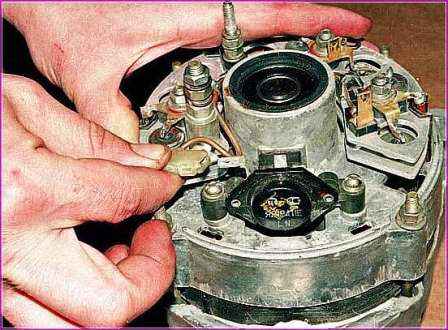
Disconnect the connector from the voltage regulator.
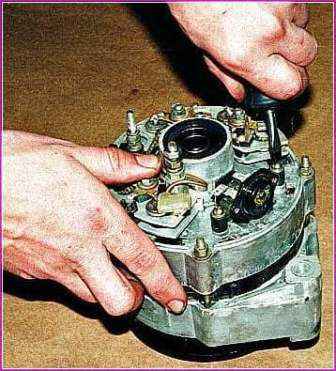
We unscrew the two screws securing the voltage regulator
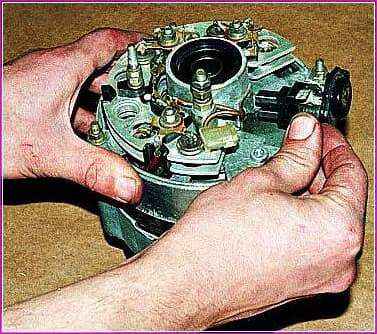
Remove the voltage regulator.
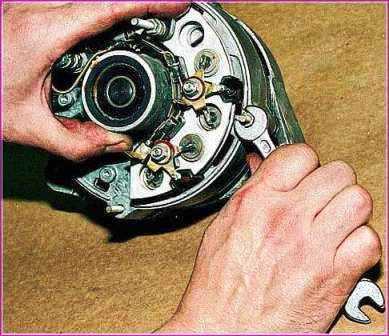
Use the "8" key to unscrew the nuts of the bolts that tighten the covers
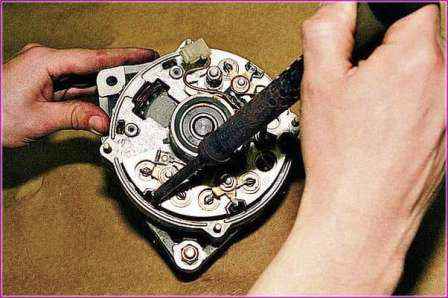 .
.
We unsolder the three leads of the stator winding from the rectifier unit.

Using the “8” key, we unscrew the three nuts securing the rectifier unit

Remove the rectifier block.
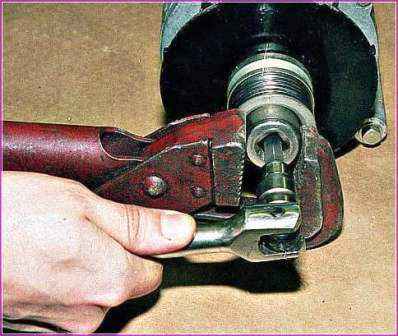
With a “24” head, using a gas wrench, unscrew the pulley fastening nut, while holding the shaft from turning with an “8” hex wrench through the holes in the head
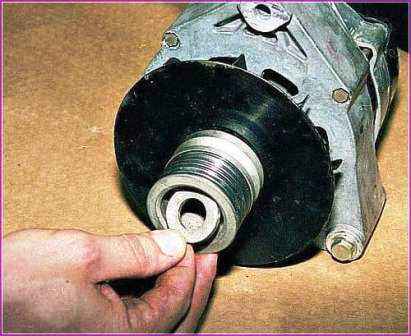
Remove the washer.
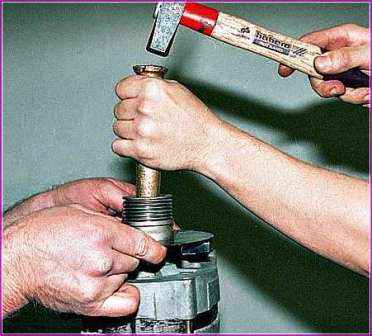
Having screwed the nut flush with the end of the rotor axis and holding the generator suspended by the fan, knock out the pulley with light blows through a soft drift.

Having unscrewed the nut, remove the pulley, fan and thrust sleeve.
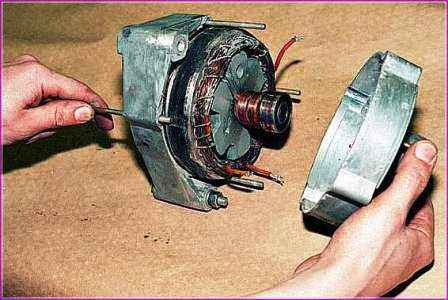
We mark the relative position of the generator covers and remove the back cover
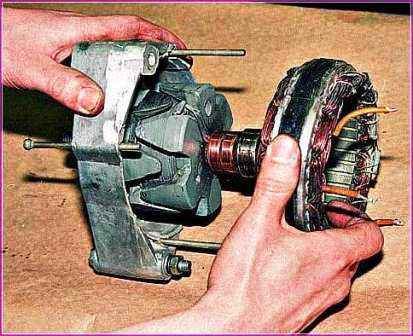
Remove the stator from the front cover
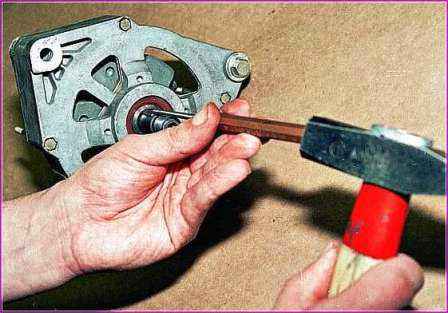
Knock out the key with a beard
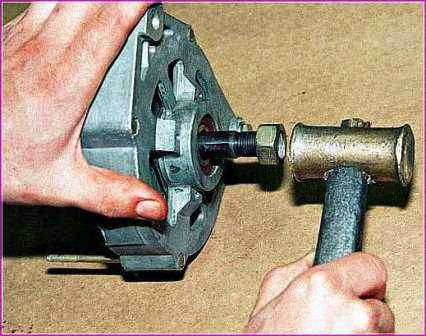
If there is no special puller, we screw the nut onto the shaft flush with the end and with a soft metal hammer, knock out the rotor axis from the front bearing.
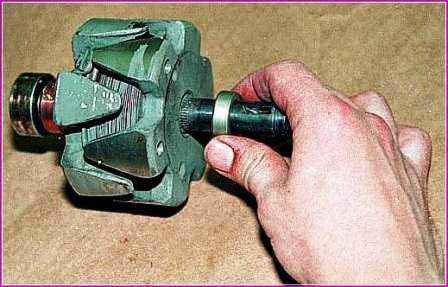
Remove the thrust sleeve from the axle.

We unscrew the four screws securing the front bearing cover.

We knock out the bearing through the mandrel
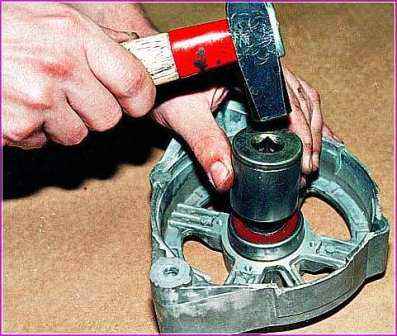
Installing a new bearing.
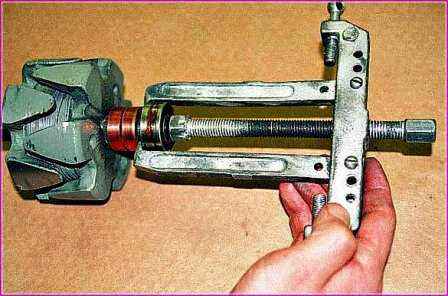
Using a puller, we dismantle the rear bearing from the rotor shaft.

We press in a new bearing with a suitable sleeve, applying force to the inner ring
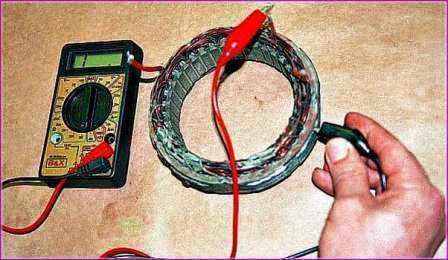
Using an ohmmeter, we check the absence of a short circuit in the stator winding to the case
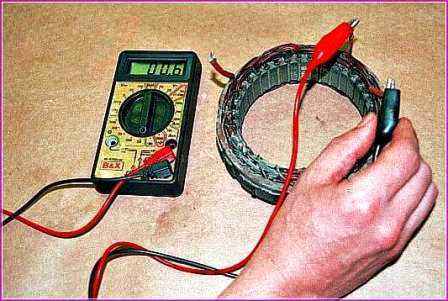
Check for an open circuit in the stator winding.
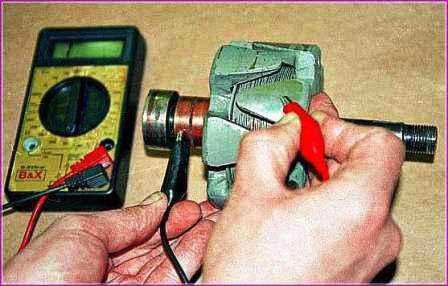
Check that the rotor winding is not shorted to the housing.

We measure the resistance of the excitation winding of the rotor, which should be in the range of 2.3 - 2.7 Ohm.

Applying voltage (12 V) of different polarity to the diodes, we check the condition of the rectifier unit
Assemble the generator in reverse order.








